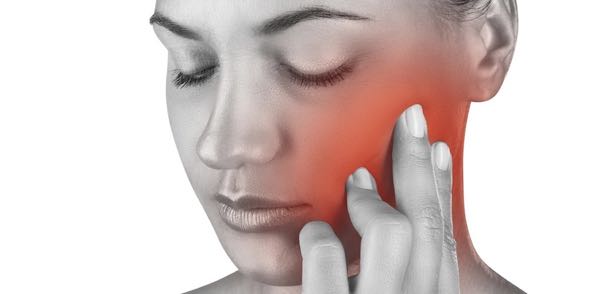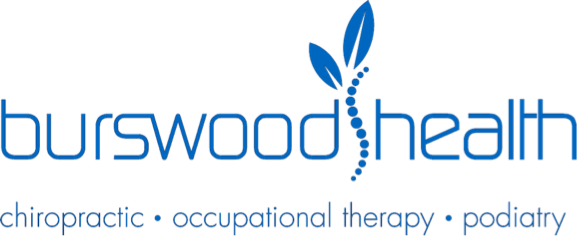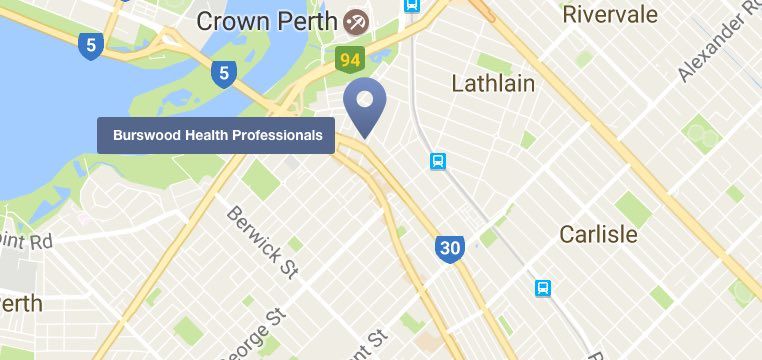Jaw Pain
The jaw joint is one of the most used and complicated joints in your body. Chewing, talking, and yawning are all normal activities that require your jaw joint to be flexible and strong.

Jaw Pain Explained
The anatomical term for the jaw joint is the temporomandibular joint (TMJ) – so named because it connects the mandible (jaw) to the temporal bones at the sides of your head.
Place your fingers just in front of your ears. Open your mouth wide and then close several times. You can feel the jaw joint move under your fingers. Now place your fingers on your temples as you open and close and feel the temporalis muscle working. There are several other important muscles that control jaw position and movement. Some of these are deep inside your mouth.
The jaw joint (TMJ) is quite complex because opening and closing requires a combination of hinge-like and sliding motions. Importantly, there is a flexible disc between the mandible and temporal bone which absorbs shock when chewing and talking. Because of the complex nature of the TMJ, problems with this joint can be complicated and difficult to understand and treat. This is a challenge for you, the patient – and your health practitioner.
What is TMD?
Temporomandibular dysfunction (TMD) is the term we use when you develop a problem with the jaw joint (TMJ) or its musculature. It can occur on one side, or both.
You know how painful dental pain can be. It is the same with jaw pain - due to the vast neurological representation of our mouth, tongue and teeth on the brain’s sensory surface.
Even a small problem can be amplified out of all proportion to its size.
Common signs of jaw dysfunction (TMD):
- Jaw muscle stiffness
- Limited opening of the mouth or locking of the jaw
- Clicking or popping in the joint when opening and closing
- Uneven closing of the teeth (malocclusion)
- Pain in the temple, face, jaw, ear or neck
- Grinding and clenching of the teeth (bruxism)
What causes jaw pain?
Other Pain You Might Feel
Neck Pain
Are you experiencing neck pain? Read more about what could be the cause of your neck pain.
- Muscle pain caused by trigger points in the jaw muscles
- Damage or displacement of the disc or injury to the joint itself.
- Arthritic change in the TMJ
- Repetitive micro-trauma caused by bruxism (clenching or grinding)
How do we diagnose TMD?
We check your TMJ as part of our usual physical examination, especially if you have had a whiplash or trauma to the face or head. If you suffer from headaches or neck pain, there is a strong possibility that your jaw muscles will be tense and tender. Such tenderness indicates trigger points which can be responsible for TMJ pain.
We look for popping or clicking – or asymmetrical opening and closing of your mouth – all of which tell us about the function of your TMJs.
If our examination reveals any problems, we may refer to your dentist to get an opinion on the evenness of your bite and to look for evidence of grinding or clenching. Bruxism can result in wear marks on the teeth which can be mild or severe.
Early Detection, Good Management
The important thing in health care is to attend to a problem as early as possible - before it becomes chronic and complicated. Our primary focus is to get your history and then exam the muscles and joints of your spine and jaw to determine the nature of any problem that may be present. Once we have a diagnosis, we will work out a treatment program tailored specifically to your condition.
At Burswood Health, we look at the whole person. With jaw pain or TMD, this becomes particularly important because stress, poor posture, chronic neck pain and headaches can all be related. A problem in one area can cause or amplify a problem in another part of the body.
We treat TMJ dysfunction with a variety of techniques. Gentle manipulation aimed at relieving pressure on the joint and disc is recognised as being very important. Soft tissue techniques such as trigger point therapy and myofascial release also play a very important role. Cold Laser Therapy and acupuncture can also be very helpful in relieving the pain and tension associated with a jaw problem.
Our Active Care Program will teach you to improve your posture, breathing and self-management of stress, which are all very important in the management of jaw pain. We will also refer you to your dentist if required. All our chiropractors and occupational therapists are proficient in the use of soft tissue therapy and the prescription of rehabilitative exercises designed to help you recover and avoid future problems.
Jaw problems can become worse over time. If you are suffering from jaw pain or headaches, please listen to your body and make an appointment to see how we can help you.
Available Treatments
Here's a DIY exercise
Reference:
National Institute of Dental and Craniofacial Research
https://www.nidcr.nih.gov/oralhealth/Topics/TMJ/TMJDisorders.htm


